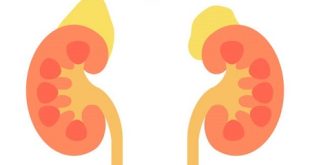What is campylobacteriosis?
Campylobacteriosis is caused by a bacteria called Campylobacter jejuni, which is found worldwide in the intestinal tracts of animals. The bacteria are spiral-shaped and can cause disease in animals and humans. Most cases of campylobacteriosis are associated with handling or eating raw or undercooked poultry meat. Campylobacteriosis causes gastrointestinal symptoms, such as diarrhea, cramping, abdominal pain, and fever in domestic animals and humans, Young animals and humans are the most severely affected
Transmission of campylobacteriosis
Campylobacter bacteria live in the intestines of many animals including chickens, cows, pigs, sheep, dogs, cats and infected humans, and are shed through feces. Raw meat of infected animals can become contaminated during slaughtering.
The most common route of transmission is generally believed to be by ingestion of undercooked meats and meat products, as well as raw/unpasteurized or contaminated milk. The consumption of contaminated water or ice is also a recognized source of infection.
An infant or child can be infected if a parent or caretaker handles contaminated food, such as raw meat, and does not wash hands adequately before handling the infant or child, their food, bottles, pacifiers or toys.
You can also become infected by:
- Coming in contact with the feces of infected humans or infected pets and not practicing good hand hygiene following the contact.
- Eating food that has been cross-contaminated during preparation. In the kitchen, bacteria can be transmitted from contaminated foods to other foods, either directly, or through contamination of surfaces or utensils. For example, if you put raw meat on a surface or in a container and then place ready-to-eat food items on the same surface without first washing and sanitizing the surface, you can transfer bacteria from the raw meat to the surface and then to the ready-to-eat food.
How long is a person able to spread campylobacteriosis?
Generally, infected people will continue to pass the germ in their stool (feces) for a few days to several weeks. Certain antibiotics may shorten this carrier phase. People with diarrhea should be excluded from daycare, patient care, and food handling. Most infected people may return to work or school when their diarrhea stops, provided that they carefully wash their hands after using the toilet and before preparing food.
Risk factors of campylobacteriosis
- HIV infection
- Exposure to poultry, cattle, sheep, or other farm animals
- Eating raw or undercooked meat (especially chicken)
- Recent foreign travel
What are the symptoms of campylobacteriosis?
Campylobacter infection may cause a variety of symptoms, including:
- Mild to severe diarrhea
- Bloody diarrhea
- Stomach pain
- Cramps
- Nausea and/or vomiting
- Fever
- Headache, and
- Muscle pain
- Persons infected with Campylobacter bacteria may not exhibit any symptoms. These asymptomatic individuals can still pass the disease on to others.
- Symptoms of campylobacteriosis usually begin two to five days after exposure, but it can also be as little as one day or as long as 10 days. The symptoms generally last three to six days, although occasionally they may last longer.
- Rarely, arthritis, meningitis, septicemia, urinary tract infections, and Guillain-Barré Syndrome can occur after campylobacteriosis.
- If you have any signs and symptoms of illness, and you have exposure to possible sources of Campylobacter bacteria, contact your physician.
What are the complications associated with the disease?
Complications are rare but can occur. Some people may develop arthritis. Others may develop a rare disease called Guillain-Barre syndrome where the body’s immune system starts to damaged nerves in the body causing muscle weakness and sometimes paralysis, beginning several weeks after the person becomes ill.
How is Campylobacteriosis diagnosed?
The diagnosis of Campylobacter infection is usually based on the isolation of Campylobacter jejuni from a stool culture.
Stool culture
A diagnosis can also be established by the direct examination of a stool sample using contrast microscopy or Gram’s strain. This direct examination provides for a rapid presumptive diagnosis that must still be confirmed by stool culture.
Stool samples should be chilled, but not frozen, for transportation to the testing lab. Labs now routinely perform culture-procedures on stool specimens that are specifically designed to promote the growth and identification of Campylobacter jejuni and the other species of Campylobacter. Fecal leukocytes should be present and indicate diarrhea to be inflammatory in nature.
Blood culture
Blood cultures are often not performed and in most cases, the bloodstream is not infected. Methods currently being developed to detect the presence of campylobacter organisms include antigen testing via an EIA or PCR.
Treatment of campylobacteriosis
Most people get over the infection without medicine or special treatments. You should drink lots of fluids while you have diarrhea.
Unless your doctor tells you otherwise, don’t take anything to prevent vomiting and diarrhea. That’s your body’s way of getting rid of the infection.
If your immune system is weak, your doctor might prescribe medicine to fight the infection.
Doctors will often first try levofloxacin (Levaquin). If you can’t take it for some other reasons, they may prescribe one of these common antibiotics that are used to treat several types of infections:
- Azithromycin (Zithromax, Zmax)
- Ciprofloxacin (Cipro, Cetraxal, Ciloxan)
Prevention of Campylobacteriosis
To prevent campylobacteriosis,
- Cook all poultry products thoroughly. Make sure that the meat is cooked throughout (no longer pink), any juices run clear, and the inside is cooked to 170°F (77°C) for breast meat, and 18°F (82°C) for thigh meat.
- If you are served undercooked poultry in a restaurant, send it back for further cooking.
- Wash hands with soap before handling raw foods of animal origin. Wash hands with soap after handling raw foods of animal origin and before touching anything else.
- Prevent cross-contamination in the kitchen:
- Use separate cutting boards for foods of animal origin and other foods.
- Carefully clean all cutting boards, countertops, and utensils with soap and hot water after preparing raw food of animal origin.
- Avoid consuming unpasteurized milk and untreated surface water.
- Make sure that persons with diarrhea, especially children, wash their hands carefully and frequently with soap to reduce the risk of spreading the infection.
- Wash hands with soap after having contact with pet feces.
 Diseases Treatments Dictionary This is complete solution to read all diseases treatments Which covers Prevention, Causes, Symptoms, Medical Terms, Drugs, Prescription, Natural Remedies with cures and Treatments. Most of the common diseases were listed in names, split with categories.
Diseases Treatments Dictionary This is complete solution to read all diseases treatments Which covers Prevention, Causes, Symptoms, Medical Terms, Drugs, Prescription, Natural Remedies with cures and Treatments. Most of the common diseases were listed in names, split with categories.







